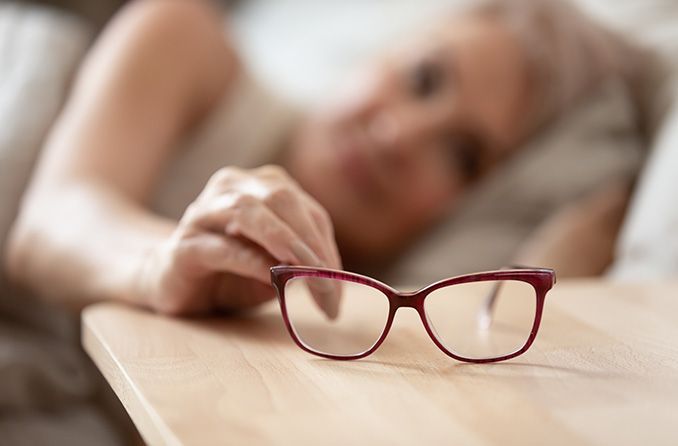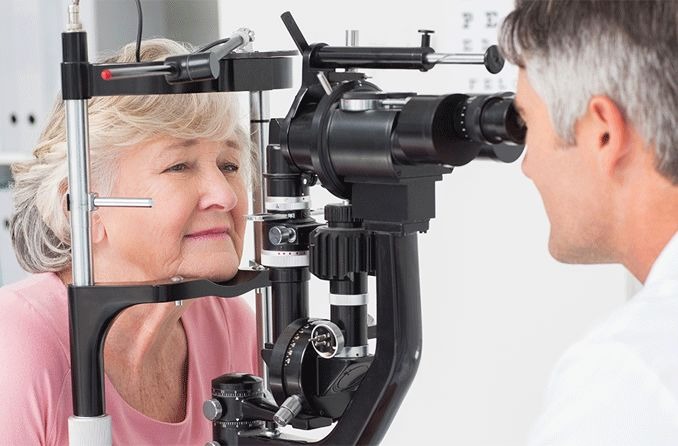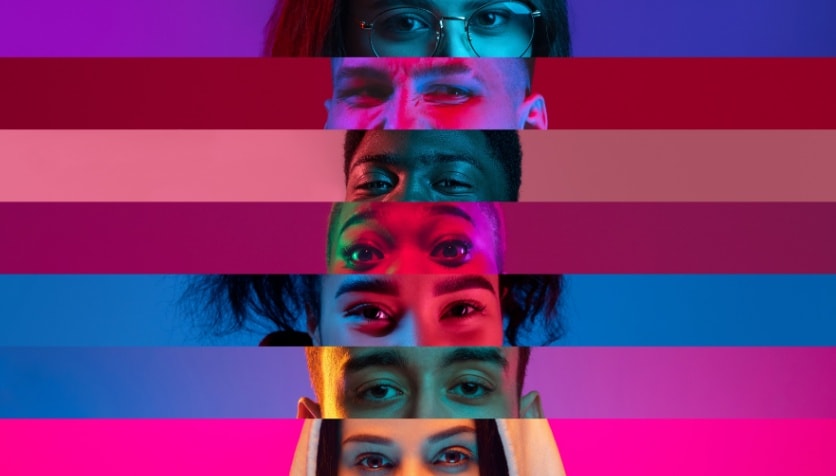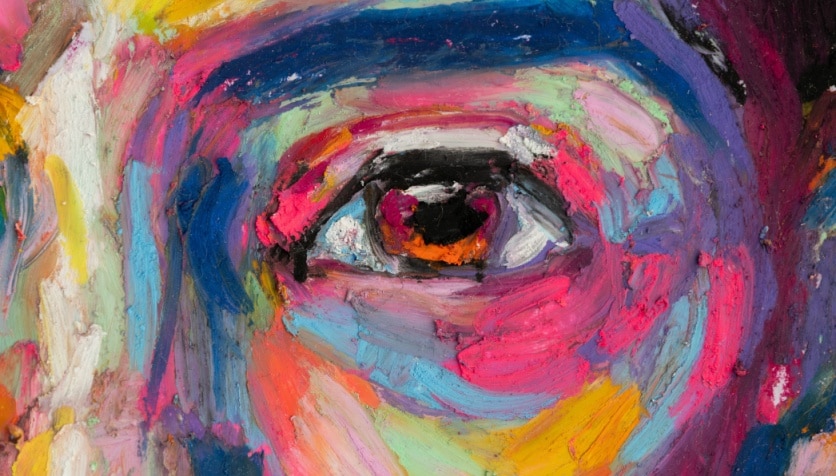Understanding how your eyesight changes with age
Your eyes and vision naturally change as you get older. Many of these changes, like having difficulty reading or needing more light to see well, are normal parts of aging. Simple adjustments and solutions can often help you see more comfortably.
But some age-related vision changes aren't normal, and they may need an eye doctor's help. In these cases, an early diagnosis and treatment can make a big difference in protecting your sight.
Knowing what to expect helps you adjust to normal changes and recognize when something isn't right. With regular eye exams and healthy habits, you can keep your vision clear and strong for many years to come.
Normal vision changes that happen with age
Normal age-related eye changes often happen slowly over time. Here's what you might notice as you get older:
Trouble seeing up close (presbyopia)
Sometime during your 40s, you'll probably feel like it's getting harder to read books, phones, menus and other reading materials.
This is a normal eye change called presbyopia. It happens because the natural crystalline lens inside your eye gets less flexible over time.
Watch for these common symptoms of presbyopia:
- It's harder to focus on near objects, especially in low light or during long periods of focus.
- Reading material looks clearer when you hold it farther away (often at arm's length).
Almost everyone will eventually need reading glasses or multifocal glasses (bifocals, trifocals or progressives). Some people choose options like multifocal or monovision contacts or surgery instead. All of these solutions can help you see up close more comfortably.
Difficulty seeing in dim or bright light
As you get older, three factors affect your ability (or inability) to see in dim or bright light:
- Your pupils get smaller and adjust more slowly to changes in light
- The crystalline lens absorbing more light
- Reduced dark adaptation of the retina
These factors can make it harder to see in both dim and bright spaces.
Some signs of normal pupil changes are:
- Your eyes take longer to adjust when you move between dark and bright areas.
- It's harder to see in a dark or dimly lit space.
- Bright lights feel more uncomfortable or overwhelming at first.
Try to use brighter lights, or more lights, in rooms where you read or focus on other tasks.
Dry eyes
Your eyes may dry out more frequently as you age. This can make your vision less clear and your eyes more uncomfortable.
Watch for dry eye changes like these:
- Blurry vision that gets better when you blink
- Discomfort or excessive tearing in windy or dry conditions
- A stinging, burning or scratchy feeling
- Eye redness
Try to stay hydrated, use a humidifier if the indoor air feels dry, and avoid eye strain as much as you can. Over-the-counter artificial tears or prescription dry eye drops (if needed) can also help your vision stay more clear and comfortable.
Some colors look duller or are harder to tell apart
Natural age-related vision changes can make some colors look less vibrant or harder to tell apart. This occurs for the same reasons that vision is worse in dim lighting. It’s also due to older brains processing color differently.
This can lead to two main changes:
- Some colors seem dull or faded.
- Similar colors or shades can blend together, especially when you're trying to tell blue from black, or green from blue.
Consider using warm colors (like yellow, orange and red) around your home to make things stand out more. Adjusting the contrast and brightness settings on digital screens can also make them easier to read.
Floaters in your vision
The jelly-like fluid inside the eye can change over time and cause eye floaters to appear in your view. Most of the time, they're a normal and harmless part of aging.
If you have floaters, you might notice:
- Dots, squiggly lines or cobweb-like shapes that drift around your field of view. They may move when you try to look at them.
- The shapes are more noticeable when you're reading or looking at bright areas, like a clear blue sky or a white computer screen.
While floaters can be a little bothersome at first, they usually get less noticeable as your brain learns to ignore them over time.
Floaters are usually harmless, but talk to an eye doctor right away if you suddenly see a lot of floaters, especially if you also see sparks of light or if part of your vision looks dark. These can be symptoms of a detached retina, which is an eye emergency.
What about cataracts?
Cataracts are technically an eye condition, but they're so common in older adults that eye doctors usually consider them a natural part of aging.
A cataract is when the clear natural lens in your eye gets cloudy. Everyone's natural crystalline lenses cloud and yellow with age, but these early changes don't affect your eyesight the way a cataract does.
It's most common for cataracts to start developing sometime during your 40s or 50s, but you usually won't need to treat them right away. By age 80, more than half of people have (or have had) at least one cataract. In fact, the average age for cataract surgery is 73.
As cataracts develop, you might find that:
- Your glasses or contact lens prescription changes more often.
- Things start to look hazy, cloudy or fogged over.
- It's harder to see at night.
- You're more sensitive to light.
- Sunlight, car headlights and other bright lights create more glare.
- You see halos around lights.
You might notice that some of these are similar to normal eye changes that happen with age. An eye doctor can tell you whether they're caused by cataracts, other age-related changes or something else.
You can often manage the early symptoms of cataracts with new glasses or contacts, but you may eventually need cataract surgery. This is when an ophthalmologist removes your cloudy natural lens and replaces it with a clear artificial lens. Your doctor can help you decide when it's time to schedule surgery.
Age-related vision changes that aren't normal

Some eye changes aren't normal parts of aging. They're symptoms of a condition that needs medical care. Your risk for some eye conditions gets higher as you get older.
Knowing the warning signs helps you take action early and protect your eyesight.
Age-related macular degeneration
Age-related macular degeneration (AMD) is when the macula, a small part of your retina, is damaged over time. The macula is responsible for the sharp vision in the center of your view. There are two main types of the disease: dry and wet.
Depending on the type and stage of AMD, it can cause:
- Blurry or distorted vision in the center of your view
- Difficulty seeing in low light
- Colors appear less vibrant
- Straight lines look wavy
- Blind spots in your central vision
AMD doesn't always cause vision changes at first, but your eye doctor can still check for signs during a dilated eye exam. If needed, they can recommend lifestyle changes, supplements, medications or procedures to help slow the disease.
Glaucoma
Glaucoma damages a vital part of your eye and vision called the optic nerve. The most common type is open-angle glaucoma, which usually harms your peripheral (side) vision first. But vision loss can happen slowly and without pain or other symptoms, so it can go unnoticed for a long time.
Without treatment, it can lead to permanent:
- Blind spots in your side vision
- Peripheral vision loss (leaving you with tunnel vision)
- Blindness
This is another reason why regular eye exams are so important for your long-term eye health. An eye doctor will check your glaucoma risk and look for the early signs of damage during routine checkups.
If they detect signs of glaucoma early on, treatment can often help protect your sight.
Diabetic eye damage
Diabetes can make the blood vessels in your retina leak and swell, which can harm your vision. This is called diabetic retinopathy.
Depending on how advanced it is, diabetic retinopathy can lead to:
- Blurry vision that may come and go
- New eye floaters
- Blind spots or total vision loss
- Retinal detachment and other serious eye problems
- Glaucoma (neovascular glaucoma)
Your eye doctor may be able to see the early signs of diabetic retinopathy before your vision changes. The sooner you can start treatment, the better.
You can lower your risk for this and other diabetes-related eye problems by keeping your blood sugar and blood pressure under control. Keep scheduling routine eye exams to catch any eye changes early.
READ MORE about other health problems that can be detected during an eye exam











